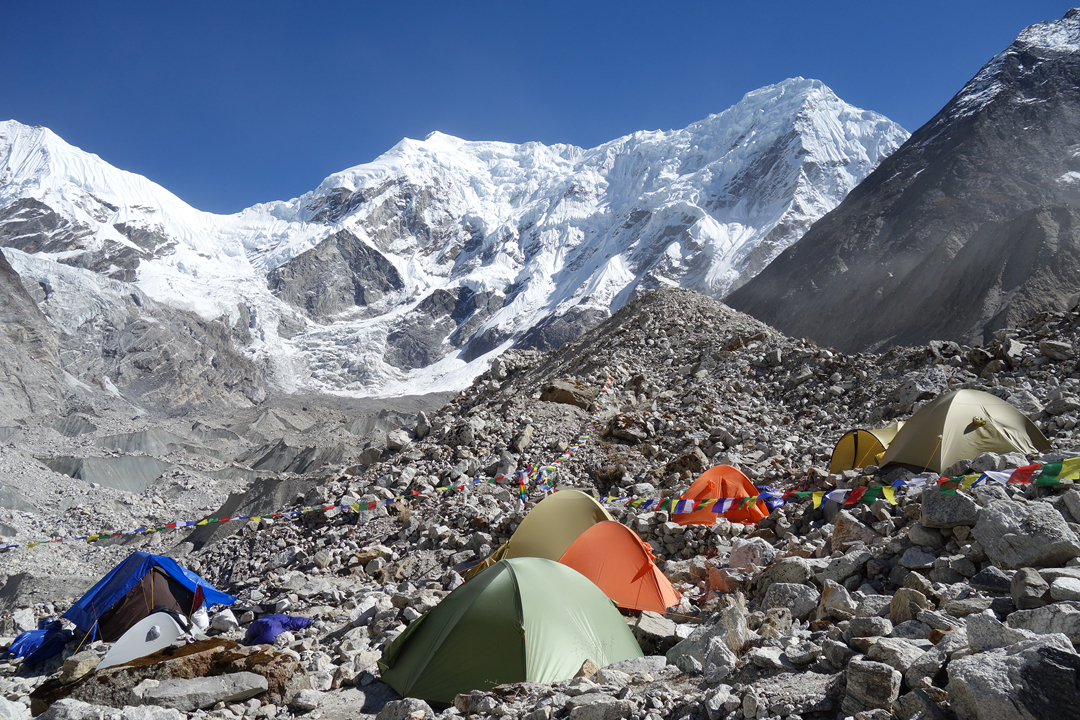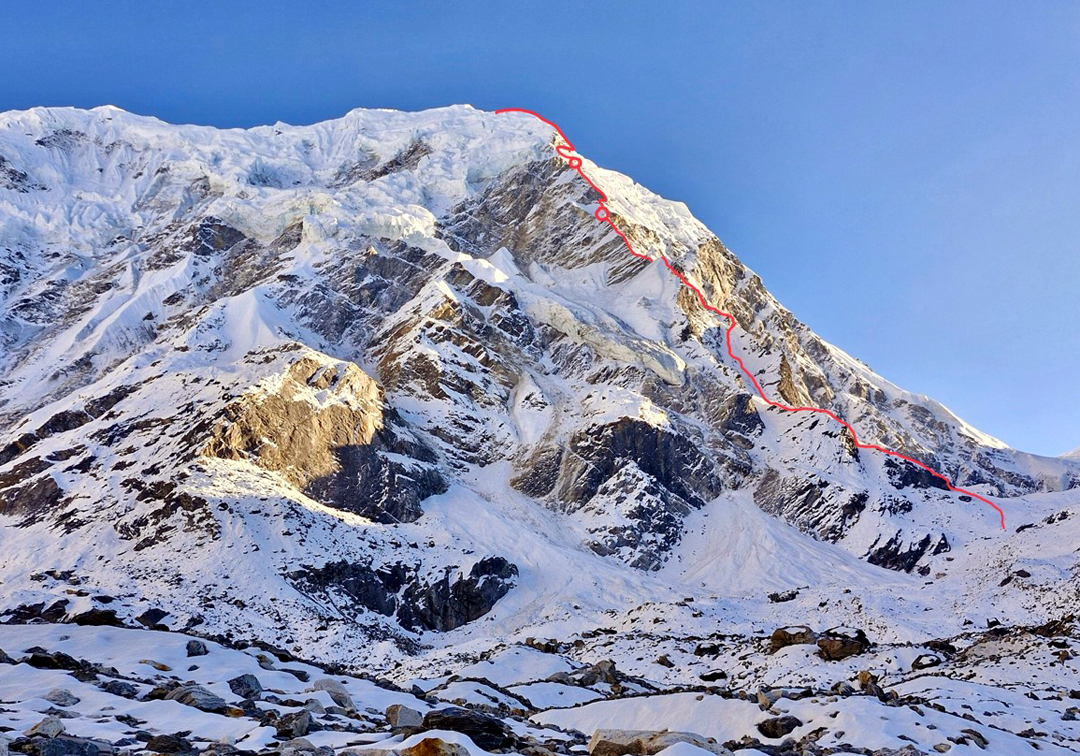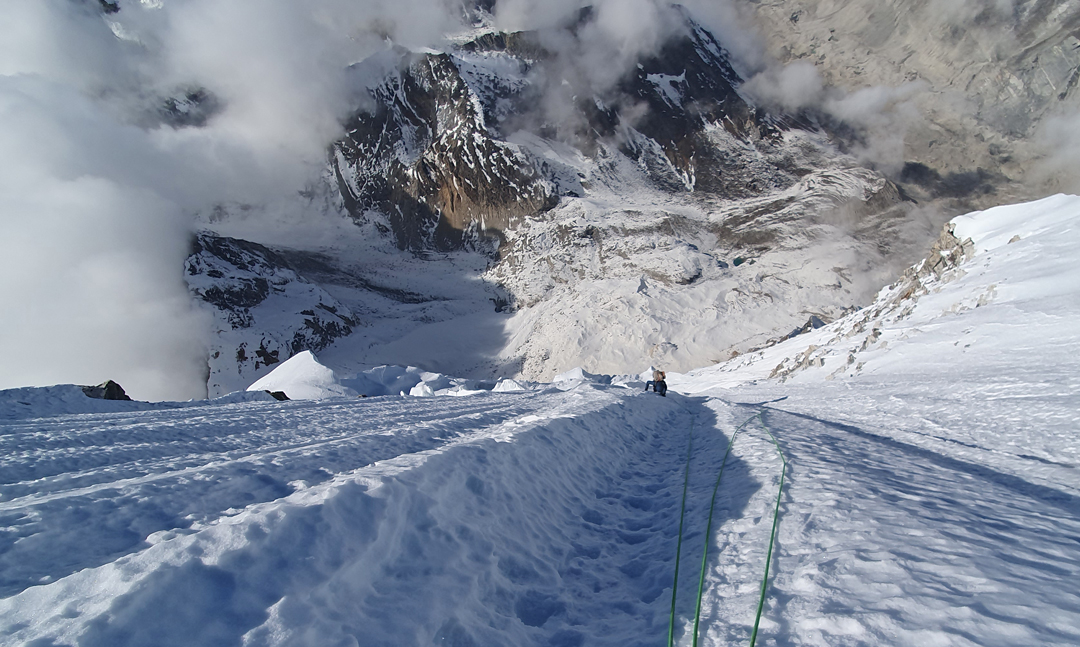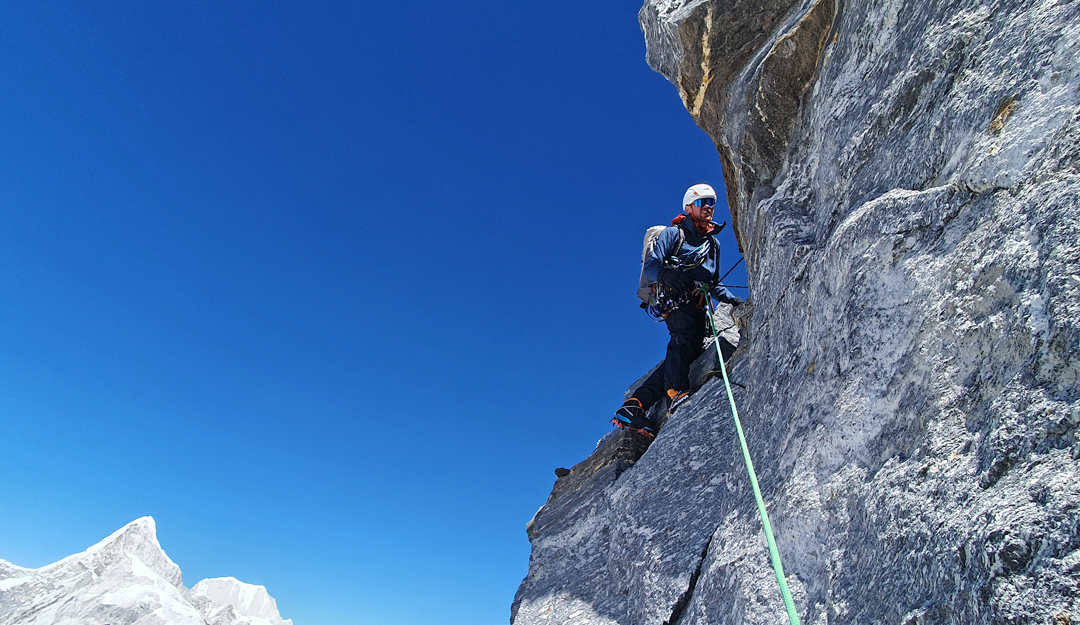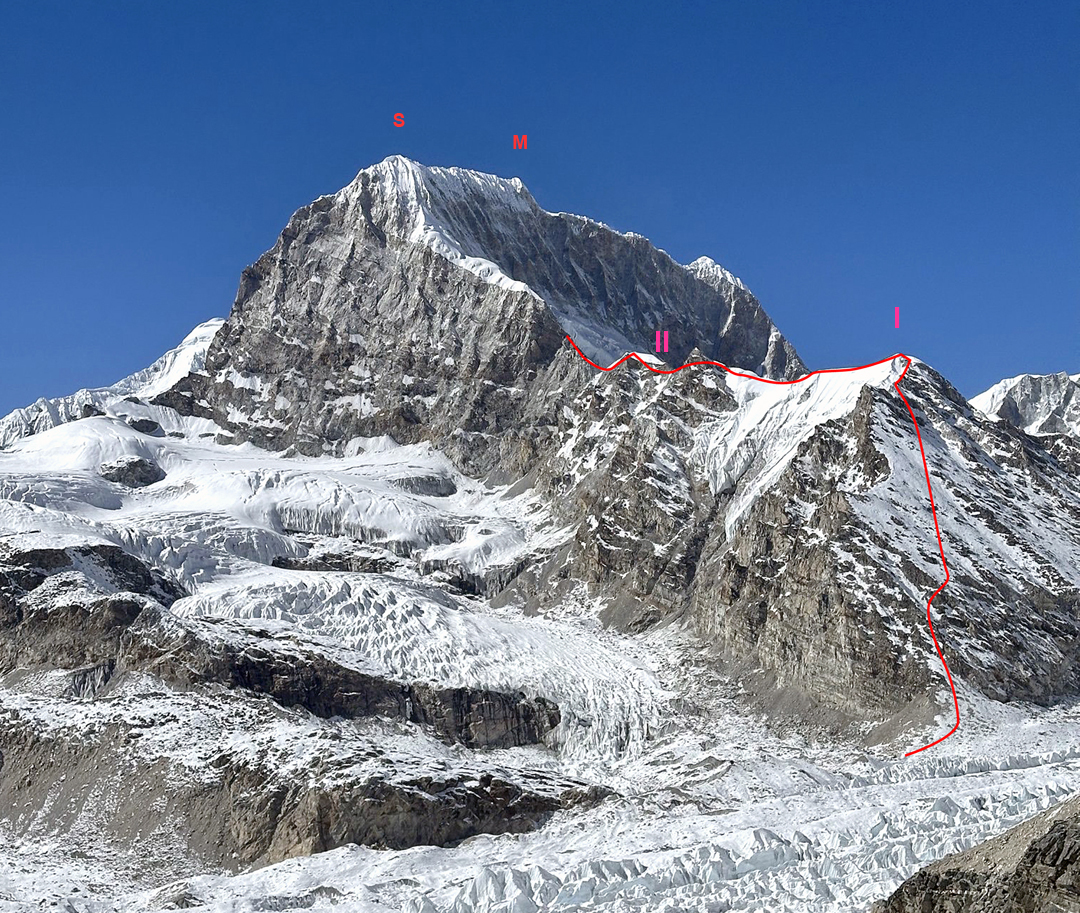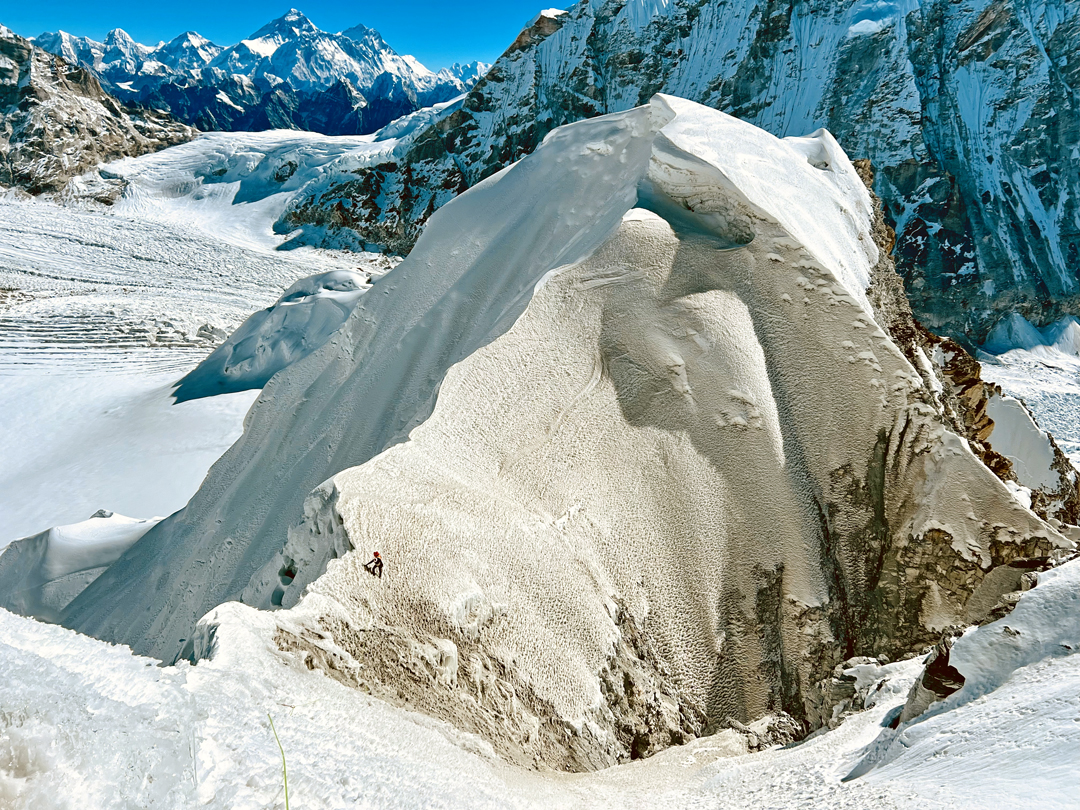Linkhu Chuli II, North Spur; Takargo East, East Face
Nepal, Rolwaling Himal
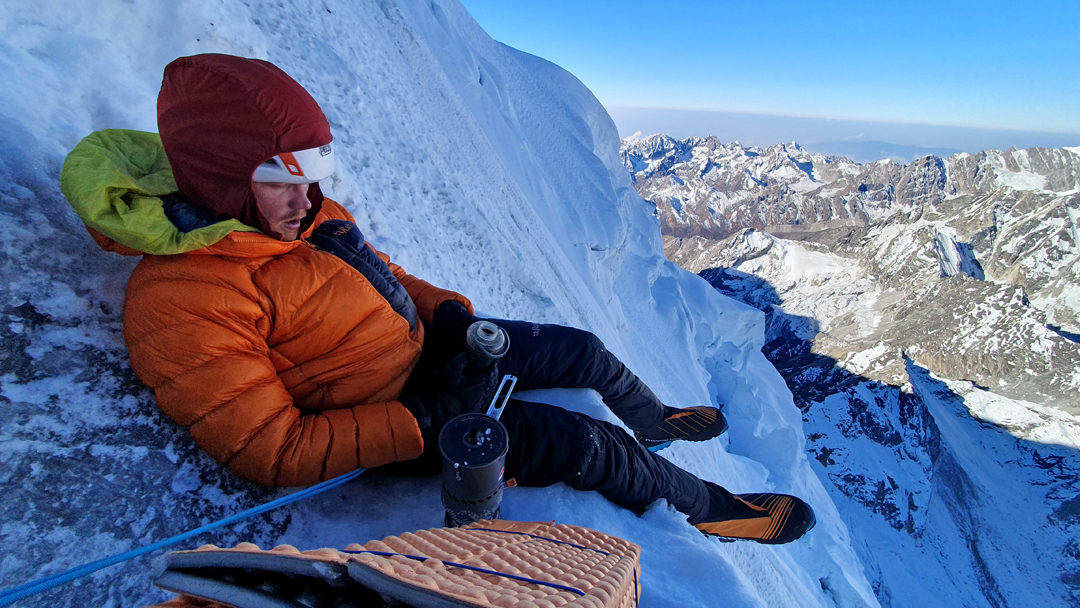
After arriving in the Rolwaling in October, Connor Holdsworth, Jack Morris, Dave Sharpe, and Nathan White (all from the U.K.) established base camp on the 21st and an advanced base at 4,860m the next day. They then acclimatized by climbing Parchamo (6,279m), in preparation for two separate objectives.
Holdsworth and Sharpe planned to climb a new route on Takargo East and then continue up the long east ridge of Takargo South. Morris and White chose to attempt the impressive north spur of Linkhu Chuli II (Linkhu Chuli Nup, 6,659m, 27°48’19.80”N, 86°31’20.97”E), which divides the serac-torn north and northwest faces, providing a direct and objectively safe route through the chaos.
Linkhu Chuli II was first climbed in 1960, following the steep and difficult west-northwest ridge, by Alain Barbezat and Nawang Dorje Sherpa, part of a French expedition led by Robert Sandoz. The team established four camps above base camp. Another ascent of this route was claimed in 2019. Farther east, Linkhu Chuli I (6,749m) has been climbed only once, in 2013, by Ines Papert (Germany), climbing with Thomas Senf to their highest camp.
Morris and White left advanced base camp on the 31st, and after climbing the entry couloir to reach the base of the north spur, found sustained and technically engaging climbing, with limited options for bivouacs. On that first day, encountering loose and unprotectable rock on the crest, they bypassed it on the right flank, the climbing there forming the crux of the route, with one pitch of Scottish 7. After 16 hours of climbing, they bivouacked at around 6,150m.
After negotiating a steep central rock section, largely on the right flank of the spur, the pair pressed on, hoping the terrain would ease toward the summit. The opposite was true. Near sunset, they were faced with a compact, vertical rock buttress and were forced to traverse horizontally right for 100m, then cut a poor tent site at around 6,400m. They eventually got to bed at midnight after a 15-hour day.
The two started again at 7 a.m. on November 2, climbing largely on ice. At 2 p.m. they arrived on a northwest top and at the junction with Linkhu Chuli II’s original route on the west-northwest ridge. The main summit was just a couple of hundred meters away, but it was obvious that a big storm was moving in, so they chose to forgo it. Descending their route wasn’t viable, due to lack of ice for anchors as well as loose rock and poor snow, so they headed down the west-northwest ridge, which until this point they hadn’t really seen. After much downclimbing and rappelling through seracs, with a very cold bivouac at 6,200m, Morris and White reached the Trakarding Glacier a little before the bad weather moved in, and their advanced base in early evening on November 3. Within 24 hours, the Drolambo Glacier and the Tashi Lapcha Pass over to the Khumbu were impassable due to deep new snow.
Morris and White named the new route to the mountain’s northwest top Dreaming of Rotisserie Chicken (1,400m, ED M6 AI3).
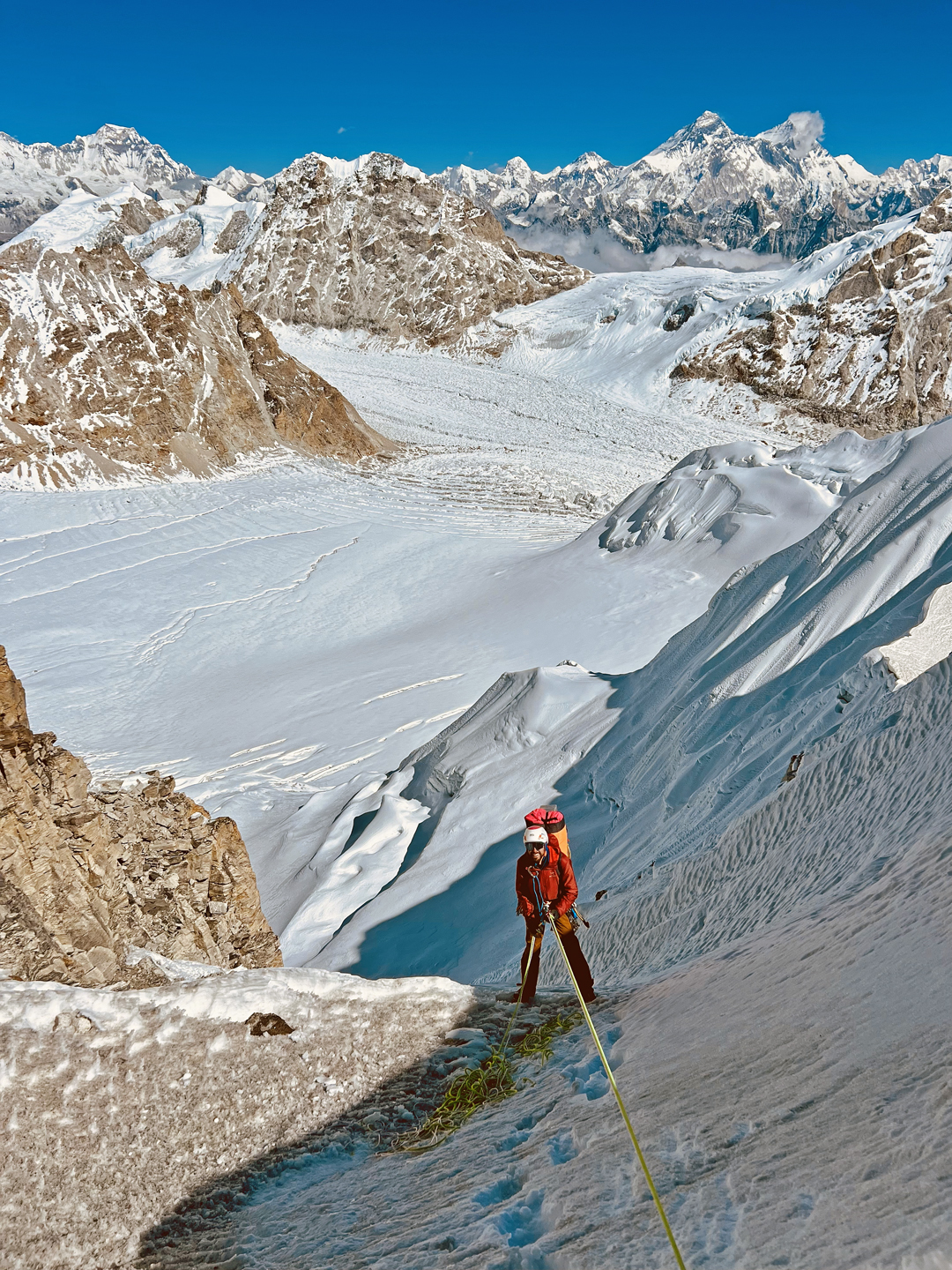
Holdsworth and Sharpe left advanced base camp two days earlier than the other British pair, on October 29, heading for Takargo East (6,132m, 27°52’22.18”N, 86°31’30.40”E). This summit was reached in 2013, via the northeast ridge, by Dawa Gyalje Sherpa, Nima Tenji Sherpa, and Tashi Sherpa, and again in January 2016 by John Kelley (USA), solo, via the south face.
Holdsworth and Sharpe crossed the Drolambo Glacier and climbed unroped up most of the east face (ca 600m). This was mainly Scottish 2/3, with a harder and looser step of Scottish 4 at the top. After spending that night very close to the summit of Takargo East, they awoke to find a set of snow leopard prints.
Two more days of climbing, mostly on loose rock and bottomless snow, but fortunately with good tent sites, took them along the east ridge of Takargo South (6,756m) until it met the main bulk of the mountain at around 6,200m. This was below the point where David Gottlieb and Joe Puryear had joined the ridge via the hanging glacier to the north during the first ascent of Takargo (6,771m) in 2010.
Holdsworth had been feeling rough for most of the ascent, and when specks of blood appeared in his vomit, it felt right to escape. On November 1, the pair rappelled the north flank to the side glacier below the east face of Takargo and returned to base camp on the 3rd. Up to their high point, they had completed around 2,000m of climbing, with cruxes of Scottish 5.
—Lindsay Griffin, with information from Connor Holdsworth and Nathan White, U.K., and Rodolphe Popier, Himalayan Database


